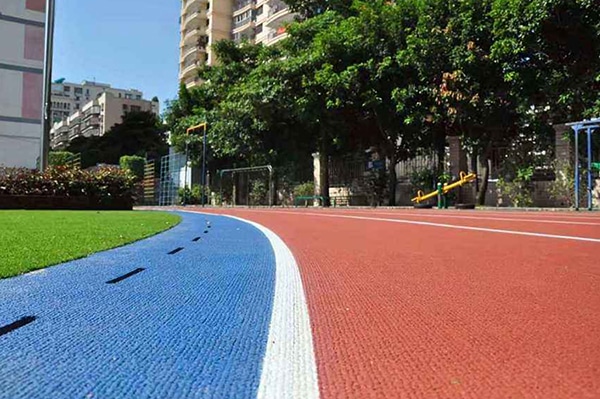Mikrosilika wird häufig im Baubereich eingesetzt, Chemie- und Feuerfestindustrie. Da Mikrosilica eine starke Vulkanascheaktivität aufweist, starke Wassersekretion, kleine Partikelgröße und große spezifische Oberfläche, usw., Es kann in Beton eingemischt werden, um die Haltbarkeit des Betons zu verbessern. So, Welchen Einfluss hat Mikrosilica auf die Haltbarkeit von Beton??
Undurchlässigkeit
Auf dem konkreten Material selbst, Die Fähigkeit, der Permeabilität verschiedener Medien zu widerstehen, hängt hauptsächlich von seiner inneren Porenstruktur und seinen Grenzflächeneigenschaften ab, davon ist das Volumenverhältnis der schädlichen Poren zur Gesamtporenmenge umso höher, desto ungünstiger für die Mediendurchlässigkeit. Für Normalbeton, wenn das Wasser-Zement-Verhältnis überschritten wird 0.6, die Durchlässigkeit von Beton nimmt stark zu, während für das Wasser-Zement-Verhältnis weniger als 0.4 Beton, es kann grundsätzlich als undurchlässig angesehen werden. For high-performance concrete mixed with a certain amount of microsilica, Das Wasser-Zement-Verhältnis liegt normalerweise unter 0.4 und mit ultrafeinen Partikeln gefüllt, Dadurch weist der mit Microsilica vermischte Hochleistungsbeton eine sehr gute Dichtigkeit auf. Wegen der kleinen Mikrosilica-Partikel, 20 zu 100 mal kleiner als die Zementpartikel, kann die Lücken in der Mitte der Zementpartikel füllen, damit der Beton dicht ist, während die sekundäre Hydratation von Mikrosilica, die neue Generation der Verstopfung der Permeationskanäle im Beton, Daher weist der Microsilica-Beton eine sehr gute Wasserundurchlässigkeit auf.
Beständigkeit gegen chemische Erosion
Durch den Zusatz von Mikrosilica kann die Durchlässigkeit von Beton deutlich verringert und das freie Ca reduziert werden (OH) 2, thereby improving the ability of concrete to resist chemical erosion. Incorporating microsilica in concrete can reduce Ca(OH)2 Inhalt, increase concrete compactness and effectively improve weak acid corrosion ability. Zusätzlich, it can also resist salt corrosion, especially for chloride salts and sulfates, the reason why it can resist acid and salt erosion, the reason is that microsilica concrete is denser, the pore structure is improved, thus reducing the rate of transfer of harmful ions, reducing the generation of soluble Ca(OH)2 and calcium alumina.
Anti alkali aggregate reaction
Alkali aggregate reaction must have three conditions: the aggregate in the concrete is active; the concrete contains a certain amount of soluble alkali; there is a certain amount of humidity. Exclude any of these three conditions can achieve the purpose of controlling the alkali aggregate reaction. The addition of microsilica in concrete, because the microsilica particles improve the compactness of cementitious materials, reducing the speed of movement of water through the slurry, making the alkali aggregate expansion reaction requires less water, but also due to reduce the concentration of alkali ions in the cement slurry pore liquid, deshalb, reducing the risk of alkali aggregate reaction.
Resistance to reinforcement corrosion
The high alkalinity of concrete provides conditions for the formation of passivation film for the reinforcement in ordinary reinforced concrete. Once the passivation film is destroyed, electrochemical corrosion of the reinforcement occurs, and the rate of corrosion depends on the rate of moisture as well as oxygen entering the concrete. The addition of microsilica improves the compactness of the concrete increasing the resistivity, so the resistance to reinforcement corrosion is greatly improved. Microsilica improves the resistivity is increased with the increase of microsilica content.
Abrasion resistance
The addition of microsilica improves the anti-abrasive properties of concrete is due to the improvement of the slurry’s own anti-abrasive properties and hardness, as well as improve the bonding of cement paste aggregate interface, so that the coarse aggregate is difficult to be eroded when subjected to abrasive action. Microsilica doped anti-abrasive concrete with no microsilica doped concrete compared to the general anti-abrasive ability can be increased by about 1 mal, anti-cavitation ability can be increased by more than 3 mal. The general anti-cavitation ability to improve the multiplier is greater than the anti-punching ability to improve the multiplier. Microsilica yield is generally taken 8% zu 10% is appropriate, when the microsilica concrete anti-abrasion.
Frostbeständigkeit
Durch den Zusatz von Mikrosilica im Beton kann zudem die Frostbeständigkeit des Betons wirksam verbessert werden. Mikrosilika-Beton nach dem 300 zu 500 schnelle Frost-Tau-Wechsel, der relative dynamische Elastizitätsmodul reduziert um 1-2%, während gewöhnlicher Beton nur durch 25 zu 50 Fahrräder, der relative dynamische Elastizitätsmodul reduziert um 36% zu 73%.





